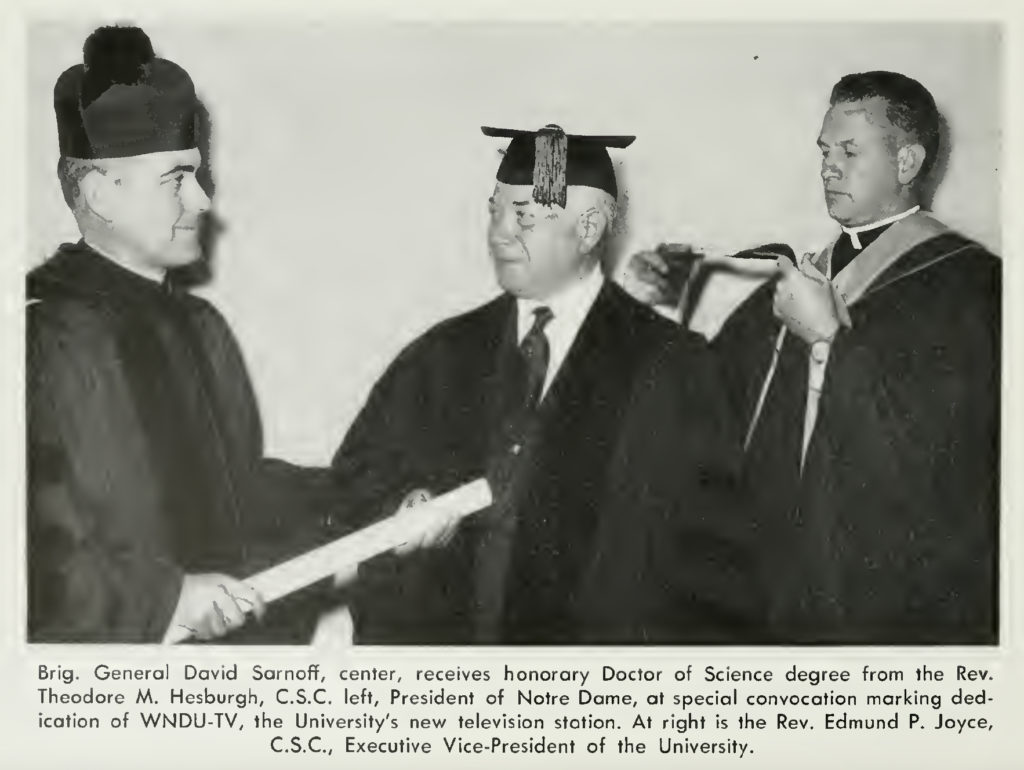
Image source: Radio Age, October 1955, page 4.
Part of why I’m so excited about this project is because it’s about so much more than just one TV series; it’s also a portal into a history of local television, production technologies, and styles of comedy and evolutions in youth culture, education, and public service.
Highlighting just one small thread of the BOC tapestry in this post, nearly as unique as Beyond Our Control itself was the pedigree of the station that aired it. NBC-affiliated WNDU was owned by the University of Notre Dame from the station’s founding in 1955 until it was sold to Gray Television five decades later, and the studio was located on campus grounds until 1982. (To see where, check out the map within this post about the station’s construction and dedication.) The university’s launch of a commercial network station was so notable that WNDU’s dedication was attended by none other than David Sarnoff, head of RCA, founder of NBC, and the most powerful person in U.S. broadcasting in the 1950s. During a special academic convocation at Notre Dame on September 30, 1955, Sarnoff told the 3,000 people assembled, “Television on the campus is the modern counterpart of the blackboard and textbook. In your Convocation Program, I note Father Hesburgh’s statement that ‘a university can no more ignore television today than universities of the past could have ignored the discovery of printing.'”
WNDU would indeed help foster broadcast education in taking on Notre Dame students as interns, but nothing made more of an educational mark within those studio walls than Beyond Our Control. Creator Dave Williams and the other advisors made it the “chalkboard and textbook” that Sarnoff foretold while fostering wisdom about a lot more than just television production. Given the station’s location, it’s additionally worth noting that, due to Notre Dame admitting only men up until 1972, the teen girls who were part of BOC in its first four years would have been among the only women receiving an education on Notre Dame’s campus at that time. (Read more about the more than 4,5000 women who did actually graduate from Notre Dame before 1972 here).
Bonus material: Click the ‘Play’ icon here to listen to Father Hesburgh’s first address to WNDU audiences as the station went live on July 15, 1955.
“It is our finest hope that through the medium of television, we will be able to bring to this whole community the many fine things that Notre Dame stands for here in South Bend. We would like you to feel that this is your station, that through this station, you are brought all of the fine elements that Notre Dame does stand for, that through your cooperation, we can make this station a fine and vital influence in this community for everything that is good.” — Rev. Theodore Hesburgh, July 15, 1955
And if you’re more interested in broadcast personalities than broadcast presidents, check out WNDU’s article on another prominent pair of guests invited to campus for the festivities: Eddie Fisher and Debbie Reynolds. (This dedication was a big deal, folks!)